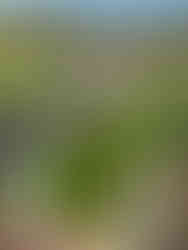The March of Spring
- Rosa
- Apr 23, 2023
- 7 min read

Sowing Springtime
Late February and March are times of change. Our main focus for the past couple of months has been seed starting, seedling raising, and planting. We start seeds inside in soil blocks or trays, or we direct sow seeds right into garden beds. Starting seeds indoors has advantages; we can keep the soil moist, regulate the temperature with heating pads, and get a head-start while its still freezing outside. These Salanova lettuce below were some of the first produce started this year, and they grew fast.
When the little plants have a couple sets of leaves and are getting too big for their britches, we start hardening them off. This is a transition period where they spend some time in our garage each day; this lets them adjust gradually to outdoor conditions. Then we finally plant them into their assigned beds. The day they go in they get a splash of fish emulsion, which a natural, liquid fertilizer that gives plants the nutrients they need to kick in new growth.
The Salanova gives a fun visual example of one effect sun can have on plants. Having only grown under plant lights, the young Salanova is mostly green. After a few days in the sun, the Red types turn a dark, beautiful purple. This color comes from the anthocyanins in the leaves. Anthocyanins are good for the plants, and for people, too.
There were lots of other seeds to start besides Salanova lettuce, such as kale and collards. These plants are lightly frost tolerant, and prefer cool weather to the heat of summer. It's always a balance between getting spring plants in early, but not so early they get hit by a hard frost. These guys all made it through, and are thriving in the nitrogen-rich soil of the old chicken run.
Beets, turnips, arugula and more were direct sown right into their beds. It's a good feeling to see the beds of the gardens fill up with vegetables, as the seeds sprout and plants are transplanted. That also means watering becomes an important part of most days.
For direct sown veggies, there's an important step that I always dread - thinning. Once the plants get just big enough that you feel attached to them, its time to snip some back so that the others have more space. Sometimes, the sacrificial sprouts can be carefully unearthed and transplanted, but sometimes what must be done must simply be done. It is a nice consolation to see the seedlings that are left behind leap ahead in growth, expanding to take up the new space they've been given. The plants below are purple top turnips, a southern classic.
Companion Planting
Over in the pea garden, the snow and snap peas (the earliest plant we direct sowed) made it through a gauntlet of frosts. They lost a few lower leaves but most of them survived. As frost became less likely, it was time to plant arugula and radishes on the shoulders of the pea beds. These plants don't mind a little bit of shade, and they don't take up much room, so they go perfectly with the vertical-growing peas.
We also used companion planting in other parts of the garden. Brassica is a genus of plants that includes a lot of common vegetables, such as cabbage, kale, collards, radishes, and turnips. These vegetables do not form partnerships with mycorrhizal fungi in the soil. These fungi and the partnerships they form with most garden plants plants are key to soil health. However, the fungi can't survive without plant roots, so it is beneficial to grow host plants throughout the year. To this end, I planted scallions in between our rows of kale, collards, and bok choy, as onions do form strong mycorrhizal partnerships.
We also planted companions on the shoulders of our future tomato beds, including calendula and chamomile. In the bed at the back of our garden next the the pasture, I planted pollinator flower mixes. The goal is to attract pollinator species, but also predator insects like wasps, which are key to controlling pest insects.
Purple Spuds
At the end of March, we also planted potatoes - this year we're planting all purple potatoes. After cutting them into golf-ball sized pieces, each with at least a couple eyes on them, they were left overnight to let the cut sides cure. Then they were planted into trenches and buried deep. Even their young leaves are purple!
Beds and Blooms
Over in the flower garden, the weeding continues, as we begin to build the beds back after the chickens leveled everything, We're using our usual method of shoveling the soil from a path into the adjacent bed, to make sure it has as much good soil in it as possible. This garden still has weeds, even after everything. As the weather warms up, the sedge especially is coming back in full force. We weed as we go, and then weed again as more sprouts. Someday we'll get there!
The flowers go through the same sowing process as the veggies, although most of the flowers are started indoors. The severe December frosts killed nearly all of our overwintering flowers, so we've started over in the spring with second plantings of things like poppies and sweet peas. We also started warm-weather varieties like statice and strawflower, which both make excellent dried flowers.
Leading up to the frost date, there's always the chance we'll need to use row covers to keep the plants protected at night. And the covers can also help to keep the heat off of newly planted seedlings, as they get used to living in the bright sun.
We use netting on a lot of the flowers to make sure the plants don't fall over, and the flower stems stay straight and long. The flowers that did make it through the winter have a head start on on growth, and are already in need of netting.
First of the Flowers
As March turns into April, the long-awaited is finally here- the first blooms of spring. Our bed of Sweet William is thriving, and things such as bupleurum and larkspur are on the way.
We also have blue bachelor buttons and a lovely variety of irises. It is important to cut the flowers back often, so that the plants continue to bloom. With these early blooms we can make the first bouquets of spring. For now, we can just make a couple, but as warm weather approaches, more flowers join the bright chorus. Soon bouquet season will start in earnest!
Farm Friends
In addition to companion plants, our gardens have companion animals. Pairs of House Sparrows perch on their nesting boxes and on fence posts just a few feet away from us. They burble their little songs, watching us as we work. Bees are beginning to visit flowers, and Bagheera visits the farm with us some days, to make sure everything is running smoothly.
The cover crop I sowed in February is going strong. It gotten eaten about three times by deer before we finally got up a good enough fence to keep them out (hopefully). And if they were going to eat something, I'm okay with them focusing on these oats and peas; for the most part, they pulled through and are growing strong.
When planting the potatoes, I found some subterranean mushrooms with an excellent example of mycelium- the white threads in my hand. (I buried them back in the ground, although I'm not sure if that'll work out). The logs edging some of the garlic beds continue to gracefully decay, and the apple mint in the mint corridor seems to have brought a fun friend when it got transplanted.
Chicks to Chickens
The baby chicks have grown up! They stopped being fluffy after a sadly short amount of time. As they got bigger, we moved their chicken trailer into the far end of the big chickens' run. We fenced off a little area so they could run around outside, and so the two flocks could get used to each other. Now the flocks are combined, although the babies mostly stay together and out of the way of the adults.
The main flock of chickens is enjoying their new run (that we built in the last blog.) They love to scratch down into the leaves looking for insects, and they love all the treats we bring them, such as weeds from cleaning up fence lines and food scraps from lunch.
The bunnies of course also get to feast on the lush weeds of spring!
Plants All Around
Spring isn't just a time for annual produce and flowers; we also have a variety of perennial plants that explode with growth in the spring. Our elderberry patches, which are planted in low points along water flow paths, grow back bigger every year. The milkweed we planted years ago always surprises me as shoots come up in new places, having spread underground from the year before. Our asparagus patch has decided that instead of making a lot of asparagus, it's going to make a humble amount - of the biggest asparagus I've ever seen (they're tender at this size!). The diversity of plants outside our garden beds strengthens the ecosystem of insects and life we want to promote on the farm.
It isn't properly spring without fruit tree blooms. The young plum in our orchard row bloomed early and then flushed out leaves; the apple tree seemed to be a favorite of the honey and bumble bees. In the soil of the old chicken run, I found cute little tree sprouts, which turned out to be peach trees from compost we'd given the chickens!
Happy Herd
Just like the people of the farm, the herd is happy that spring is here. On an evening walk with them, we pulled down some cedar branches that hang over their fence so that they could get a little treat. Winnie used his brother Robin as a step ladder to get the best mouthful; he didn't seem to mind. It's nice to watch the herd graze as I work in the pasture-side garden; most of the time they come over to me to try to get a snack, but right now their pasture has more treats for them than my garden does.
Marching On
Finally winter feels like it's behind us. Some nights are still cool, but as of mid-April the frost date has officially passed. This time of year is a wild time to garden; you stare at your little plants and worry about them growing, and then you blink and they're 4 inches taller. Things we hoped would work out all winter are starting to come to fruition.
A few day before I wrote this blog, I went into the pea garden to thin out the radishes, and instead found fully grown radishes peeking out of the soil. That beautiful batch of was the first produce harvest of spring, joining our first bouquets. It was a lovely moment, but this blog is already long enough, so I'll save it for the next one.
Until then, thanks so much for reading!
-Lillian































































































































































Comments